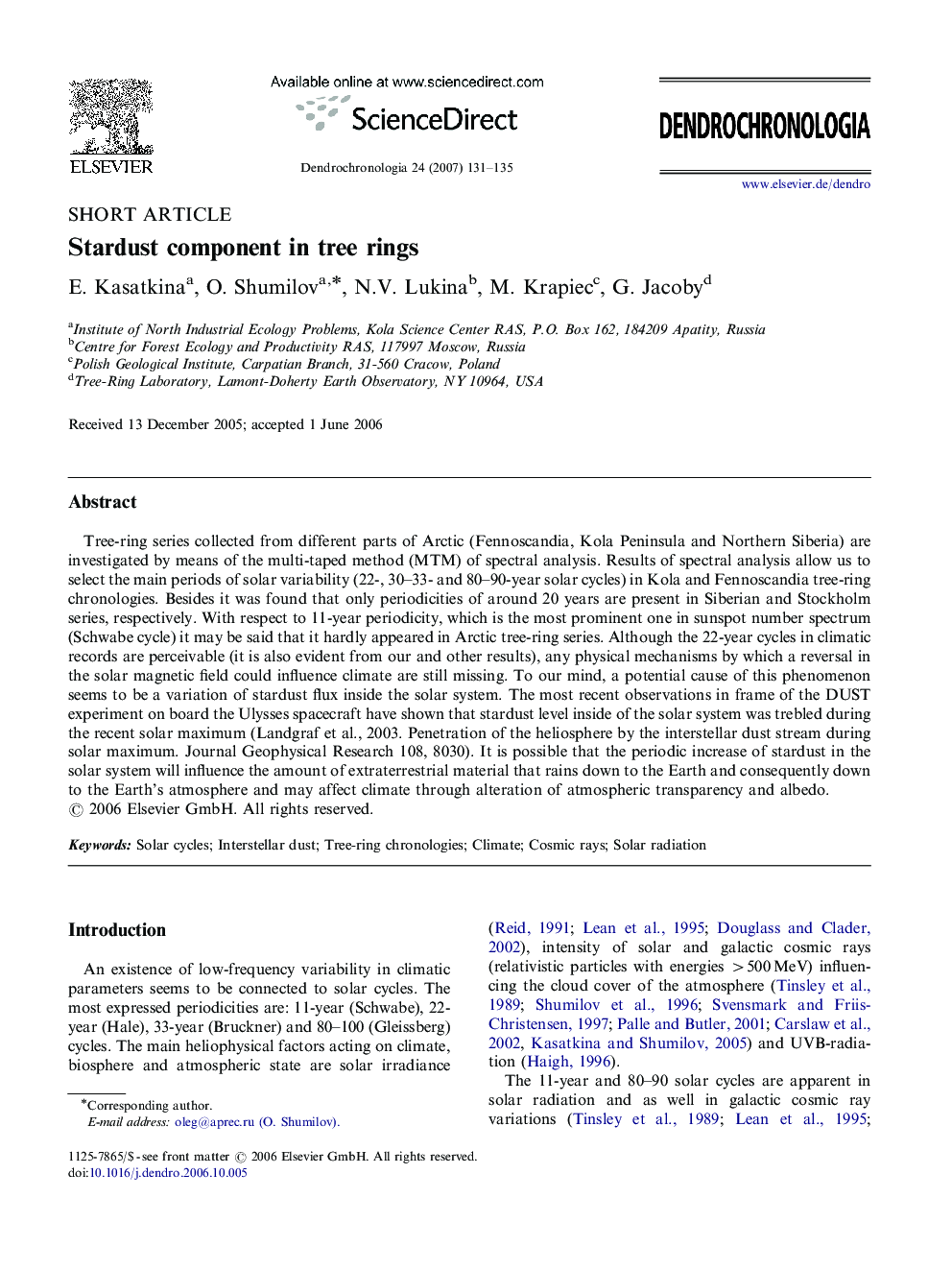| Article ID | Journal | Published Year | Pages | File Type |
|---|---|---|---|---|
| 85832 | Dendrochronologia | 2007 | 5 Pages |
Tree-ring series collected from different parts of Arctic (Fennoscandia, Kola Peninsula and Northern Siberia) are investigated by means of the multi-taped method (MTM) of spectral analysis. Results of spectral analysis allow us to select the main periods of solar variability (22-, 30–33- and 80–90-year solar cycles) in Kola and Fennoscandia tree-ring chronologies. Besides it was found that only periodicities of around 20 years are present in Siberian and Stockholm series, respectively. With respect to 11-year periodicity, which is the most prominent one in sunspot number spectrum (Schwabe cycle) it may be said that it hardly appeared in Arctic tree-ring series. Although the 22-year cycles in climatic records are perceivable (it is also evident from our and other results), any physical mechanisms by which a reversal in the solar magnetic field could influence climate are still missing. To our mind, a potential cause of this phenomenon seems to be a variation of stardust flux inside the solar system. The most recent observations in frame of the DUST experiment on board the Ulysses spacecraft have shown that stardust level inside of the solar system was trebled during the recent solar maximum (Landgraf et al., 2003. Penetration of the heliosphere by the interstellar dust stream during solar maximum. Journal Geophysical Research 108, 8030). It is possible that the periodic increase of stardust in the solar system will influence the amount of extraterrestrial material that rains down to the Earth and consequently down to the Earth's atmosphere and may affect climate through alteration of atmospheric transparency and albedo.
